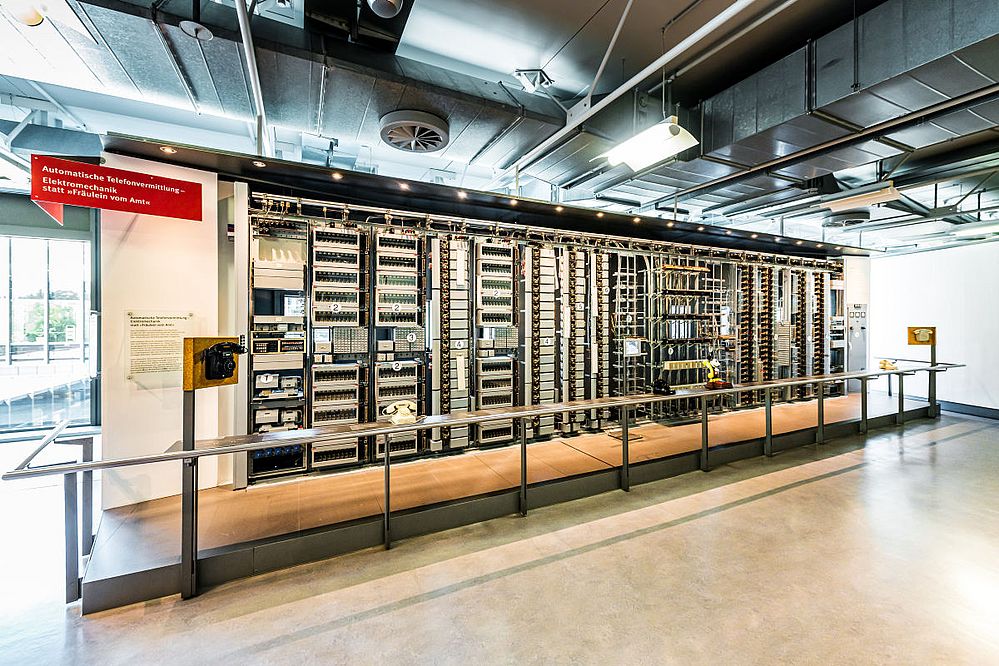Speed, reliability and discretion depend very much on the operator when manual switching is involved. Furthermore, costs of staffing are very high and the maximum number of subscribers per exchange is restricted.
In 1889, Almon B. Strowger (USA) applied for a patent for his two-motion switch. This formed the basis for automatic telephone switching. Experiments began with different kinds of switch.
The first automatic exchange
In 1892, Strowger Automatic Telephone Exchange Co. set up the first automatic exchange in La Porte, Indiana (USA). Automatic switching was triggered by pressing buttons for the hundreds, tens and units positions. The company reverted to the original idea of the two-motion switch in 1895. In 1896, it introduced the rotary dial.
In Germany, the Reichstelegraphenverwaltung (Imperial Telegraph Administration) set up its first trial system with 400 connections in 1900. It was not linked to the public network. In 1908, Hildesheim had the first automatic exchange in Europe. In 1909, the first automatic exchange based on a central battery was opened in Schwabing, part of Munich. In 1923, Munich was the first city with fully automatic local telephone traffic.
Full automatisation in 1972
In the same year, subscriber trunk dialling first became possible - in the Weilheim region in Upper Bavaria. The equipment available at that time, however, did not allow automatic dialling over distances of more than 100 km.
The last switching system based on the two-motion switch to be used by the German Post Office was the S 50, introduced in 1950 (on the left in the exhibition). Its successor, the S 55, was introduced in 1955 (on the right in the exhibition). The S 55 was based on the new noble-metal uniselector motor switch, which permitted subscriber trunk dialling over any distance. Domestic telephone traffic in Germany was fully automated in 1972.
In the 1980s, conversion of exchanges to electronic digital switching systems began. Deutsche Telekom's last electro-mechanical switching systems disappeared in 1997.
